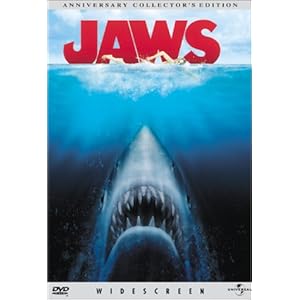 |
| "Nom nom nom nom nom!" |
Let's say you took a drop of blood and dumped it in the ocean. Because of diffusion, that drop would eventually spread out in all directions, much like a drop of red food coloring in a glass eventually spreads out and makes the entire glass red. If the blood spreads out equally in all directions, then it will eventually cover a hemisphere 1 mile in radius. This means the blood will be distributed over a volume of
V = 2 π R3
=2 · (3.14159) · (1 mile)3
= 2.6×1010 m3.
A drop of blood is about 1 mL. This means the density of molecules in a 1 mile radius drops by a factor of about
(1 mL) / (2.6×1010 m3) = 3.8×10-17.
That's very tiny. I'm not exactly sure what part of the blood the shark is supposed to smell, since there are many components that make up blood. Let's assume he's smelling the red blood cells. A healthy red blood cell count is in the range 4.6-6.1 million per μL = 5×10-9 per mL. If the blood spreads out uniformly over this distance, there will be
(3.8×10-17) · (5×10-9 per mL) = 1 red blood cell every 5 m3.
That's a very tiny amount. I highly doubt a shark, or any other creature, could detect something with this small a concentration. Besides, the MythBusters already busted this myth during shark week.
Bonus Shark Blood Question #1: Even if a shark could detect concentrations this small, how long would it take a red blood cell to travel 1 mile?
Bonus Shark Blood Question #2: Where does a shark's blood come from if blood comes from bone marrow and sharks are cartilaginous fish? (I know...this is not a numbers question, but I've always been curious.)
